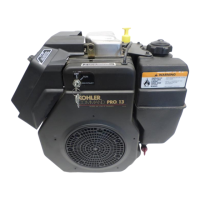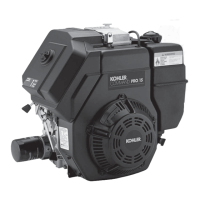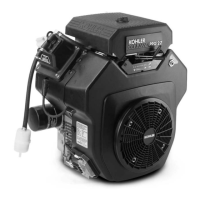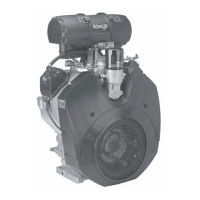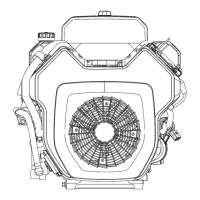Troubleshooting
22 24 690 06 Rev. PKohlerEngines.com
Test Pressure Chart for Dual Gauge Tool
Left Gauge Regulated Pressure
Selection Right Gauge Reading in PSI
80 PSI
Recommended for engines over 200
cc or those exhibiting high leakage at
35 PSI setting.
80 72 64 56 48 40 32 24 16 8 0
35 PSI
Recommended for single cylinder
walk-behind push mower
applications.
35 31.5 28 24.5 21 17.5 14 10.5 7 3.5 0
Percentage of leakage 0% 10% 20% 30% 40% 50% 60% 70% 80% 90% 100%
Green Zone Yellow Zone Red Zone
Leakdown Test Results
Test Result Condition Action
Gauge reading in low
(green) zone.
Piston rings and cylinder in
good condition.
No further action required.
Gauge reading in
moderate (yellow)
zone.
Air escaping from crankcase
breather and/or dipstick tube.
Some wear present causing leakage from
combustion chamber to crankcase. Repair not
required at this time if breather system is
functioning normally.
Air escaping from exhaust. Exhaust valve leakage present, possibly due to
carbon deposits. Repair not required. Carbon
cleaning could be performed to reduce leakage.
Air escaping from intake. Intake valve leakage present, possibly due to
carbon deposits. Repair not required. Carbon
cleaning could be performed to reduce leakage.
Gauge reading in
high (red) zone.
Confi rm consecutive leakdown
test has been performed AFTER
engine has been operated under
normal load conditions.
Air escaping from crankcase
breather and/or dipstick tube.
Excess wear present causing leakage from
combustion chamber to crankcase. Breather
system will not function normally and will fail
crankcase vacuum test if this condition is truly
present. Engine disassembly and analysis
required to determine root cause and
correction.
Air escaping from exhaust. Excess exhaust valve leakage present, possibly
due to carbon deposits and/or valve to seat
sealing issues. Carbon cleaning may reduce
leakage. Valve grind and/or component
replacement may be necessary. Excess oil
consumption and/or excess heat is a suspect
cause and must be resolved to prevent
reoccurrence.
Air escaping from intake. Excess intake valve leakage present, possibly
due to carbon deposits and/or valve to seat
sealing issues. Carbon cleaning may reduce
leakage. Valve grind and/or component
replacement may be necessary. Excess oil
consumption through intake valve and/or
excess heat is a suspect cause and must be
resolved to prevent reoccurrence. Inspect
breather system components and intake valve
stem sealing.
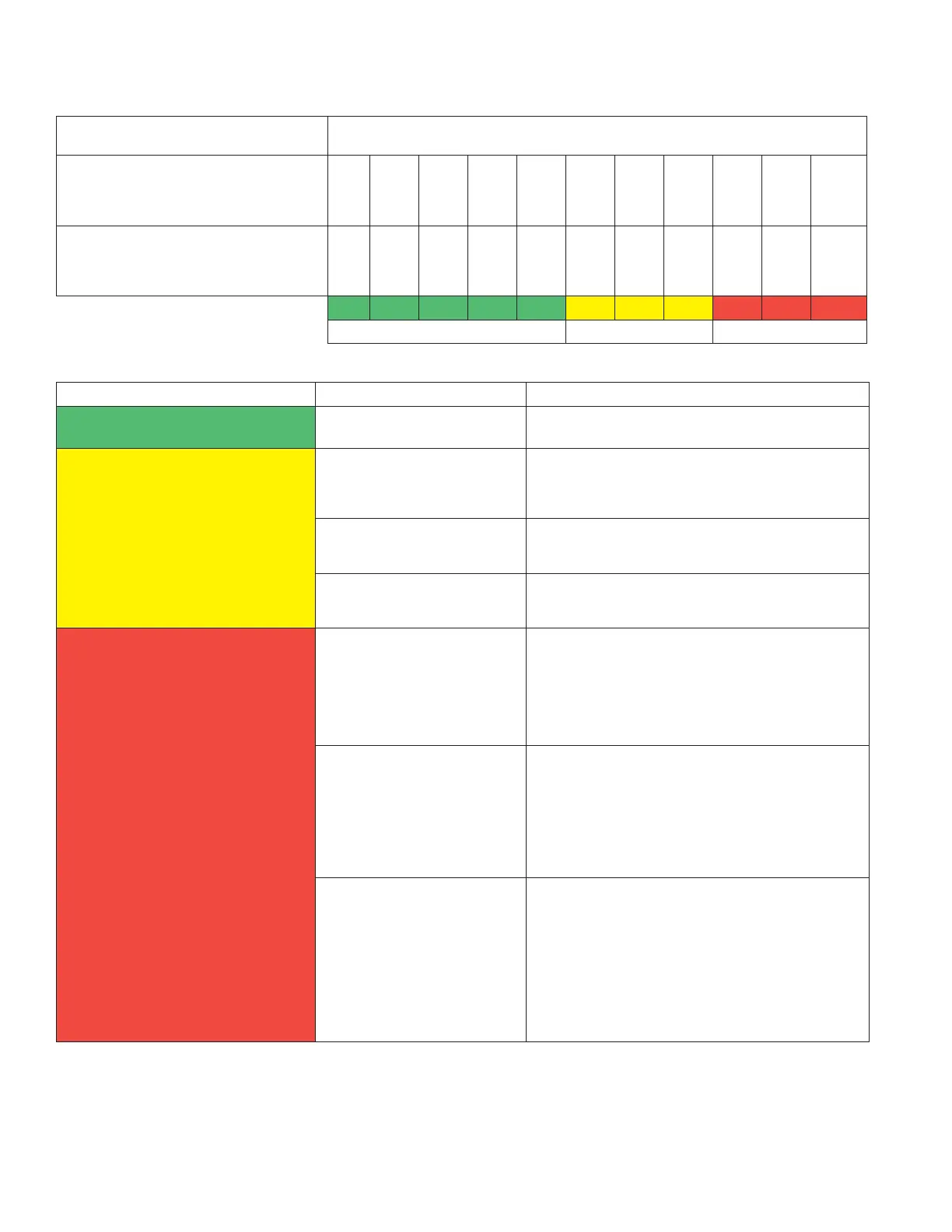